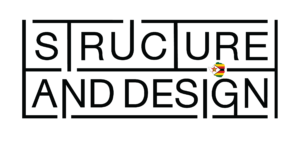THE VR experience is not a simple one that can be explained in simple means. You are immersed and entirely introduced into another reality, seeing and hearing a whole new world. It might be a movie, sports, a game or The VR Experience HIFA 2017 maybe a 3D model of the house you want to build. You effectively no longer have to be somewhere to feel like you are there. We had a recent VR experience, powered by a local company and staged by HIFA. It was breath-taking and relevant. HTC VIVE is a high end virtual reality headset developed by HTC and Valve Corporation, released on 5 April 2016.
The headset is designed to utilize “room scale” technology to turn a room into 3D space via sensors, with the virtual world allowing the user to navigate naturally, with the ability to walk around and use motion tracked handheld controllers to vividly manipulate objects, interact with precision, communicate and experience immersive environments. We used it with the Google App ‘Tilt Brush’ to paint 3D graphic artworks that you could walk through and interact with. Getting into our technical research, the Vive has a refresh rate of 90 Hz.
The device uses two screens, one per eye, each having a display resolution of 1080×1200.[20] The device uses more than 70 sensors including a MEMS (Microelectromechanical systems) gyroscope, accelerometer and laser position sensors, and is said to operate in a 15-by-15-foot (4.6 by 4.6 m) tracking space if used with both “Lighthouse” base stations that track the user’s movement with sub-millimeter precision.
The front-facing camera allows the software to identify any moving or static objects in a room; this functionality can be used as part of a “Chaperone” safety system, which will automatically display a feed from the camera to the user to safely guide users from obstacles. We saw this when we tried Autodesk apps with it. It was there we were introduced to the possibilities of Autodesk and its foray into VR, what it means to truly experience a design. But what was now important to us was the types of as well as the availability of the devices we used.
MICROSOFT HOLOLENS Microsoft HoloLens, known under development as Project Baraboo, is a pair of mixed reality smartglasses developed and manufactured by Microsoft. HoloLens gained popularity for being one of the first computers running the Windows Mixed Reality platform under the Windows 10 operating system. The HoloLens can trace its lineage to Kinect, an add-on for Microsoft’s Xbox gaming console that was introduced in 2010. When using it, you do not get completely immersed but you augment your reality. Able to see digital objects that do not exist in the physical world. The HoloLens features an inertial measurement unit (IMU) (which includes an accelerometer, gyroscope, and a magnetometer) four “environment understanding” sensors (two on each side), an energy-efficient depth camera with a 120°×120° angle of view, a 2.4-megapixel photographic video camera, a four-microphone array, and an ambient light sensor. Applications available so far
- Cortana, Microsoft’s Virtual Assistant.
- Holograms, a catalog of a variety of 3D objects that users can place and scale around them; ranging from tigers and cats to space shuttles and planets.
- HoloStudio, a full-scale 3D modeling application by Microsoft with 3D print compatibility.
- An implementation of the Skype telecommunications application by Microsoft. Any user with Skype on his or her regular devices like PC, Mobile etc. can dial user on HoloLens and communicate with each other. With Video call On, the user on PC will see the view HoloLens user is seeing and
THE SAMSUNG GEAR VR is a mobile virtual reality headset developed by Samsung Electronics, in collaboration with Oculus, and manufactured by Samsung. The headset was released on November 27, 2015. When in use, a compatible Samsung Galaxy device (Galaxy Note 5, Galaxy S6/S6 Edge/S6 Edge+, Galaxy S7/S7 Edge, or Galaxy S8/S8+) acts as the headset’s display and processor, while the Gear VR unit itself acts as the controller, which contains the field of view, as well as a custom inertial measurement unit, or IMU, for rotational tracking, which connects to the smartphone via micro-USB. The Gear VR headset also includes a touchpad and back button on the side, as well as a proximity sensor to detect when the headset is on. The device can be calibrated using the wheel at the top of the headset.
A trackpad is located on the right of the device and back button is located just above it. Volume can be adjusted through the volume rockers also found on the right hand side Some of the major goals Samsung set for this project regarding hardware were: that their headset could support MTP (Motion to Photon) latency less than 20 ms; the optimization of hardware and kernel; and also to create Galaxy Note 4’s QHD display that enables high-resolution rendering in the headset. The lenses field of view is 96° for the first three models and 101° for the R323. We used it to view various kinds of video content which was rich in detail, in fact, which felt extremely realistic. We also used it for Google Earth as well as a simulation for interior design. Samsung also has the means to record 360 videos. This is the best way to capture video for VR after all. HoloLens user will see view captured by PC / Mobile device user camera.
- HoloTour, an audiovisual threedimensional virtual tourism application.
- Fragments, a high-tech crime thriller adventure game developed by Microsoft and Asobo Studio, in which the player engages in crime-solving.
- Young Conker, a platform game developed by Microsoft and Asobo Studio, featuring a young version of Conker the Squirrel.
- RoboRaid (previously code-named “Project X-Ray”), an augmented-reality first-person shooter game by Microsoft in which the player defends against a robot invasion, aiming the weapon via gaze, and shooting via the Clicker button or an air tap.
- Actiongram, an application for staging and recording short video clips of simple mixed-reality presentations using pre-made 3D virtual assets,[31] will be released in summer 2016 in the United States and Canada.
- An interactive digital human anatomy curriculum by Case Western Reserve University and Cleveland Clinic
- Architectural engineering software design tools, SketchUp Viewer by Trimble Navigation was the first commercially available HoloLens applicationnonprimary source needed]
- A version of the Mojang video game Minecraft [non-primary source needed]
- Extended functionality for the Autodesk Maya 3D creation application [nonprimary source needed] • OnSight and Sidekick, software projects developed by a collaboration between NASA and Microsoft to explore mixed reality applications in space exploration [non-primary source needed]
- FreeForm, a joint project between Autodesk and Microsoft integrating HoloLens with the Autodesk Fusion 360 cloud-based 3D development application [non-primary source needed]
- Galaxy Explorer, an educational application about the Milky Way in development by Microsoft Studios, pitched and chosen by the developer community via the Share Your Idea campaign, and to way. Retailing at an impressive $9 Get it, fold it and look inside to enter the world of Cardboard. It’s a VR experience starting with a simple viewer anyone can build or buy. Once you have it, you can explore a variety of apps that unfold all around you. And with plenty of viewer types available, you’re sure to find one that fits you just right. The platform is intended as a low-cost system to encourage interest and development in VR applications.
- Users can either build their own viewer from simple, low-cost components using specifications published by Google, or purchase a pre-manufactured one. To use the platform, users run Cardboard-compatible applications on their phone, place the phone into the back of the viewer, and view content through the lenses. Through March 2017, over 10 million Cardboard viewers had shipped and over 160 million Cardboard app downloads had been made.
- Following the success of the Cardboard platform, Google announced an enhanced VR platform, Daydream, at Google I/O 2016. We have not tried this one yet. Out of the ones we tried, we can confirm the Samsung Gear is locally available and you will find prices starting from $70 to $180 as well as the 360 camera. Mobile phones that are VR ready are plenty in the market, with our own experience being a Samsung Galaxy S7. be open-sourced upon completion [non-primary source needed]
- • A spacecraft design/visualization application in development by NASA’s Jet Propulsion Laboratory (JPL









